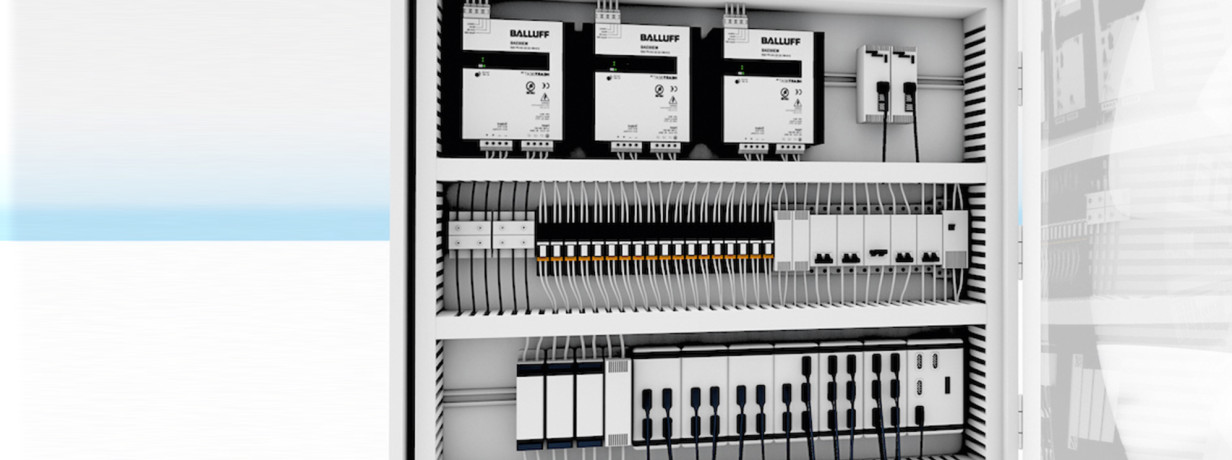Direct connection
How data transport from the field level directly to the control level works

Until the 1960's electrical controllers consisted of relays. These electromagnetic switches were connected to each other and to other electronic components by means of fixed cables. This is referred to as a wired programmed controller.
The first programmable logic controller (PLC) was invented in 1968. This eliminated the many wired connections, replacing them with software programs and eliminating relays. The PLC itself was still wired directly to the controlling devices. We will show how that works.
Wire devices direct to the PLC
Normally a production machine consists of various in- and output devices such as drives, sensors, actuators or signal lamps. All these devices either generate or need signals exchanged with the central control cabinet. The control cabinet contains the PLC, the central supply voltage and, if needed, an HMI for the system. Cables carry the analog and digital signals for the in- and output devices in the field, which are directly wired to the in-and output cards in the central controller or via terminal strips.
The wiring effort is the greatest when directly connecting a device to the PLC. This is because each conductor in the cable needs to be wired to the correct card in the controller. Terminal strips installed between the device and PLC can serve to bundle the wires. Plugs help when connecting a corresponding sensor to the PLC or terminal strip. Special valve connectors are used to connect a valve to the PLC.
